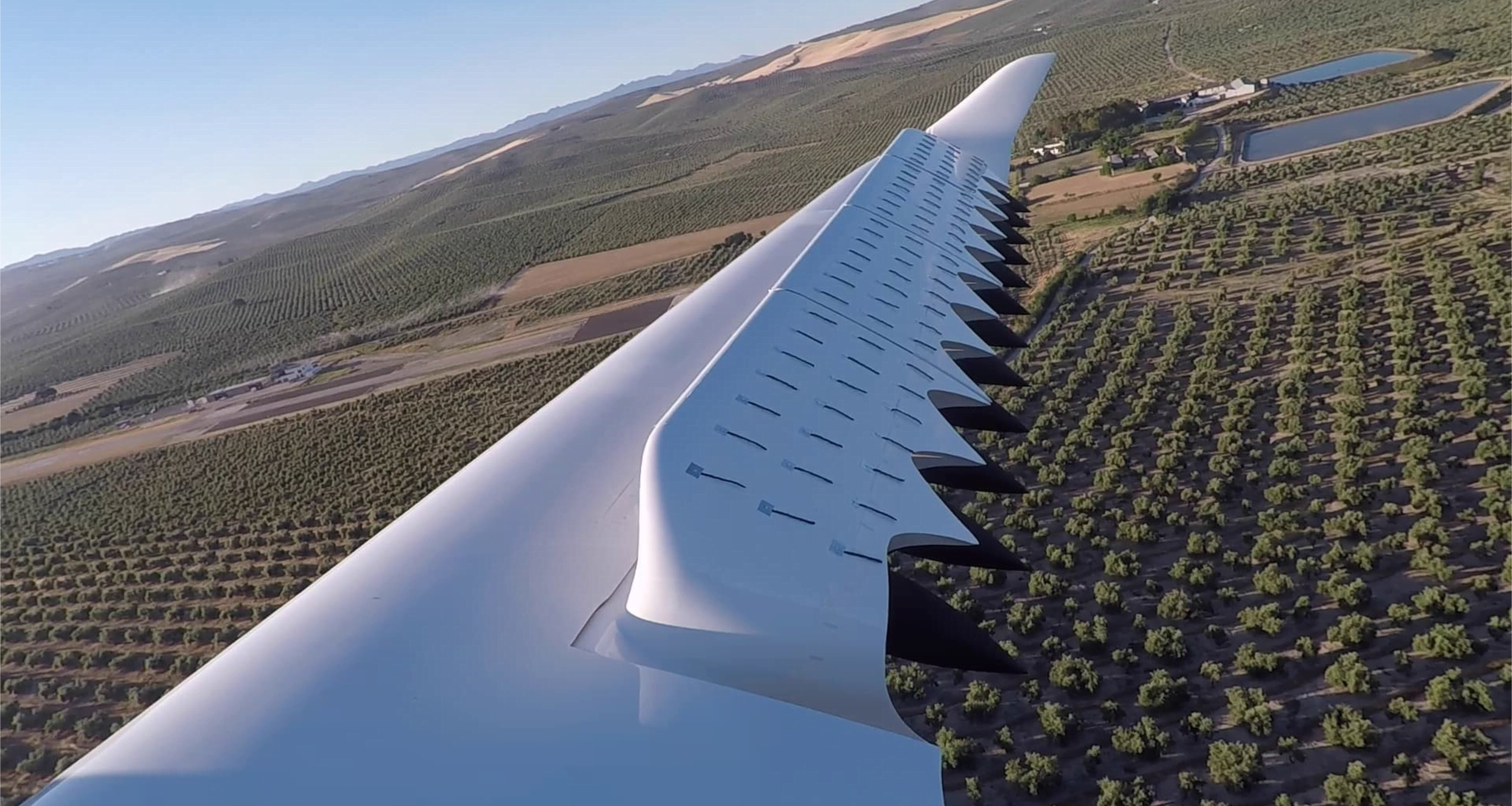Alef Aeronautics wants to start delivering its $300,000 Model A flying car to customers by 2025.
Source: Alef Aeronautics
What if flying around in an electric vehicle is a key part of the way you travel in the future? That’s what dozens of companies around the world are betting on.
EVTOLs, or electric vertical take-off and landing vehicles, popularly known as flying cars or air taxis, are being developed by firms in the U.S. to Europe and Asia.
The eVTOL market could be worth $1 trillion by 2040, according to JPMorgan, and several firms are trying to take the lead.
In the latest episode of “CNBC Tech: The Edge” we explore the eVTOL market — its promise and its challenges. Below are some of the companies in the eVTOL space and what they’re trying to bring to market.
Four of the most common eVTOLs
An eVTOL aircraft can take off and land vertically. And it is, of course, powered by electricity rather than traditional fuel.
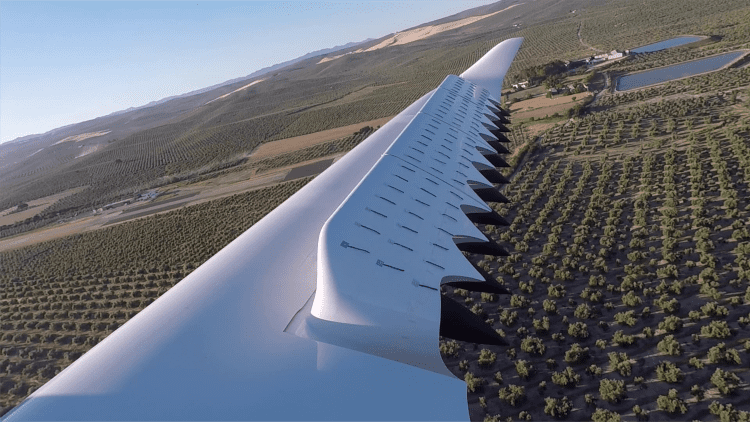
There are hundreds of eVTOL designs in the works, with varying technologies. Here’s a look at four of the most common.
The “multicopter” operates like a standard drone. It has multiple propellers that help it fly. They are very efficient during take-off, landing, and while hovering, but because they don’t have wings, they’re incredibly inefficient at going long distances. They could be useful in urban areas.
The “lift & cruise” concept merges the multicopter with common aircraft technology, like wings, making longer distances possible. But to get the two technologies to work together, the propeller needs fewer and shorter blades — making it very noisy.
Then there’s “tiltrotor” — a design which has one or more rotors mounted on a wing that can tilt up and down.
Finally, there are “ducted vectored thrust” models, which don’t have a propeller in sight. They use multiple, individually controlled electrical ducted fans to push the vehicle upward. This model is quieter and can fly longer distances efficiently, but are quite power-hungry.
So, aren’t these just glorified helicopters? Not quite. From the technologies they use to take off and land to the fact they’re electric, eVTOLs are trying to distinguish themselves from helicopters. Not to mention that helicopters are quite expensive too. Many eVTOL companies are talking about a world in which these vehicles become part of everyday travel in or between cities — at an affordable price.
How are eVTOLs regulated?
Aviation regulators around the world are in charge of making the rules around eVTOLs. In Europe, that’s the the European Union Aviation Safety Agency. In the United States, it’s the Federal Aviation Administration. And in China, that’s the Civil Aviation Administration of China.
All of those regulators have put in place various rules and certifications that eVTOL producers and operators need to adhere to and meet before being able to take these aircraft commercial.
The certifications revolve around areas such as aircraft safety and pilot licenses.
How will eVTOLs work in real life?
While eVTOLs are currently being tested at dedicated sites, many aircraft makers are talking about a future where they will be in commercial use.
Some are discussing the possibility of eVTOLs operating within a city as a mode of urban transportation. Others are looking at ways these electric aircraft could be used for travel between cities, perhaps accompanying or replacing other modes of travel like cars and trains.
But infrastructure will need to built to support this. One key piece of infrastructure will be so-called “vertiports,” a type of helipad combined with mini airport where these aircraft will take off and land.
While some wealthy individuals may own their electric aircraft, they will more likely be operated in fleets by an operator, as is the case with airlines.
Challenges to eVTOL adoption
There are several challenges when it comes to adopting eVTOLs. Complying with regulations and ensuring they are safe is one of the biggest ones.
Perhaps the biggest challenge, however, is public acceptance and adoption.
Adoption could be held back if people perceive them as unsafe and if they’re expensive to use.
Lilium
Lilium is headquartered just outside of Munich, Germany, and is one of the European eVTOL firms hoping to take off in the coming years.
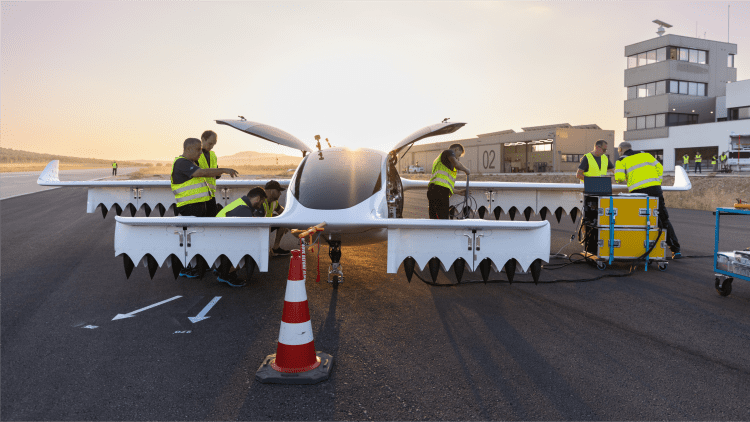
The company is currently doing test flights with its jet in southern Spain. The aircraft works on the ducted vectored thrust technology, with the company hoping its jets will be used for longer regional flights rather than urban routes. Lilium is targeting 2026 as the year its jet enters into service.
Lilium’s jet has a customizable interior, meaning the design and the number of seats can be changed depending on a customer’s requirements.
The firm is already taking orders from the premium market. One jet will cost $9 million. The version designed to be operated by fleets will cost $7 million.
Lilium has a number of investors, including Chinese internet giant Tencent.
Alef Aeronautics
Alef Aeronautics has a different take on the eVTOL — a vehicle that can drive on the road and fly in the air.
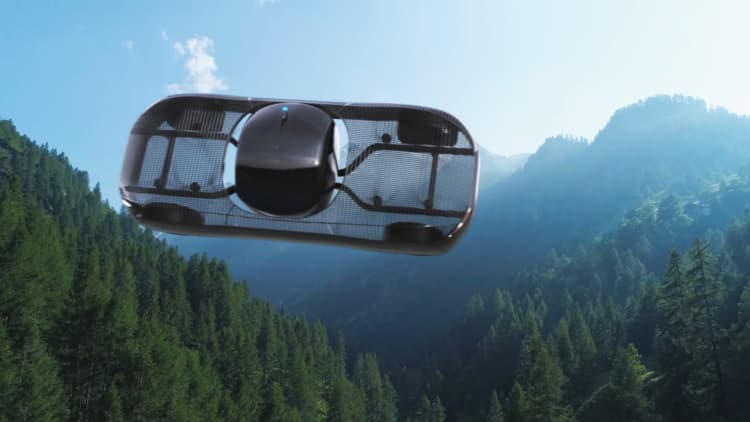
The car’s chassis is hollow and hides a number of propellers. A video demonstrating how the car might work shows the vehicle taking off vertically and being able to fly on its side.
Alef Aeronautics has big ambitions to start production in 2025.
“If everything goes right, if we have enough funds, if the legislation does not get worse … we plan to start production of the first one by the end of 2025,” Jim Dukhovny, Alef Aeronautics’ co-founder and CEO, told “CNBC Tech: The Edge” in an interview.
The company’s most notable backer is venture capitalist Tim Draper, who was an early investor in Tesla, SpaceX and Theranos.
Customers can now pay a $150 deposit to pre-order the car — known as the Model A — which has a price tag of $300,000.
EHang
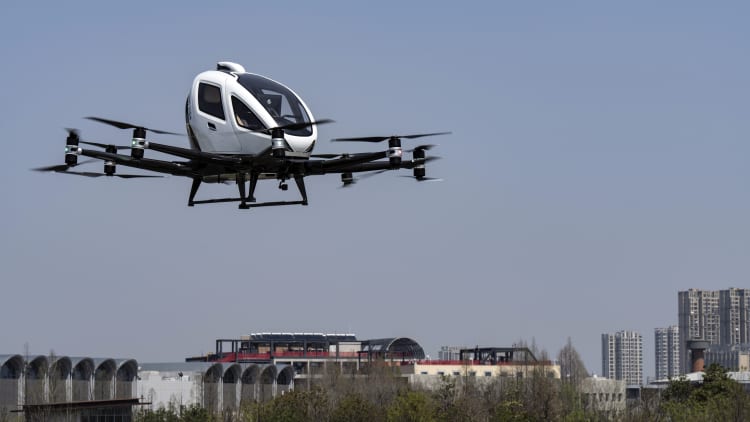
Chinese firm EHang makes a passenger drone designed to fly around cities. It has a number of propellers extended on arms.
EHang has received a number of certifications from its home regulator, the Civil Aviation Administration of China.
The latest is a so-called production certificate which authorizes EHang to begin mass production of its eVTOL aircraft.
EHang’s flagship vehicle, the EH26-S, has a suggested retail price of $410,000
Read More: World News | Entertainment News | Celeb News
CNBC

